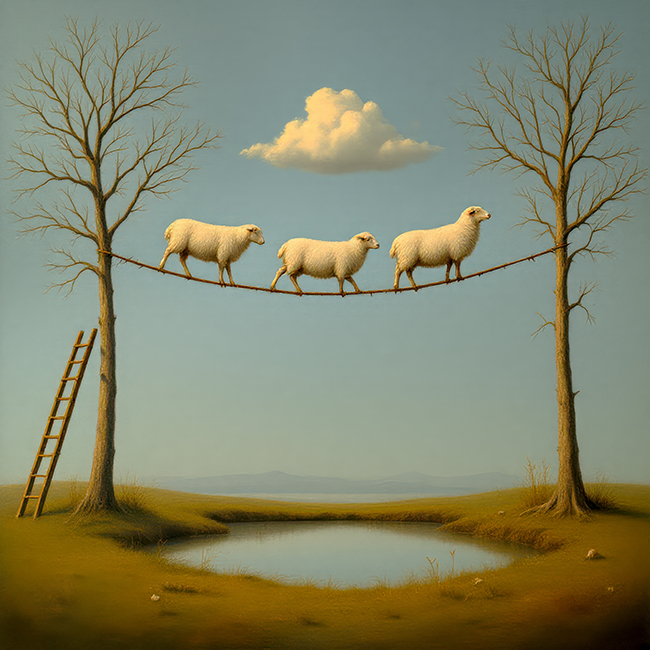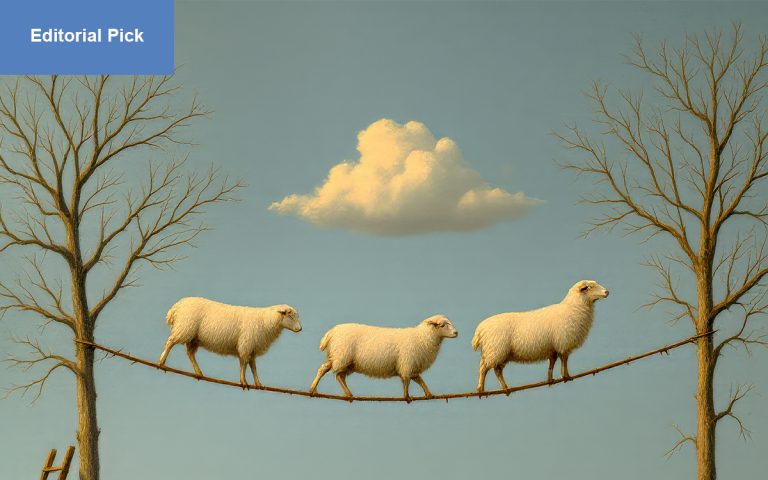Alan Brown’s artistic journey began not in a gallery, but in the quiet shadows of a darkroom. It was there, watching images emerge slowly on photographic paper, that he first felt the magnetic pull of art. That moment—seemingly ordinary, deeply transformative—ignited a passion for visual storytelling that has carried him through more than forty years of creative work. With a BS in Communications from Syracuse University, where he majored in Advertising Photography and minored in Art History, Brown built a strong foundation that bridged both the technical and historical sides of art. Over time, that balance of craft and context evolved into a practice rooted in experimentation, reflection, and a search for meaning in the everyday. His photographs and mixed-media pieces carry the sense of someone who has lived with images for decades, not as fleeting impressions, but as enduring companions.

The Work: The Crossing, Series 1, II
Brown’s piece The Crossing, Series 1, II offers a vision that is both whimsical and unsettling. Three white sheep traverse a tightrope strung between barren trees, suspended above a still pond where their precarious passage doubles in reflection. A lone cloud hangs in the distance, lending the scene a quiet tension—serenity cut through by unease.
The description of the work, as Brown frames it himself, speaks to his engagement with NeoSurrealism. By merging surreal elements with contemporary sensibilities, he transforms ordinary subjects into dreamscapes. The sheep, symbols of innocence and repetition, are placed in an impossible situation: balancing above water, risking everything in their fragile crossing. The barren trees act as anchors, yet they are lifeless. The pond mirrors the scene, adding an extra layer of meaning, as though memory itself were watching.
Between Reality and Imagination
What makes Brown’s work resonate is the way he treads the line between what we know and what we imagine. The sheep are real, the trees are real, the pond is real. But together, in this arrangement, they cross into something uncanny. It’s not fantasy in the literal sense, but rather the surreal quality of life when stripped down to symbols.
NeoSurrealism, the term often attached to Brown’s style, isn’t about imitation of earlier surrealist icons. It’s about using surreal methods to reframe contemporary experience. The dreamlike quality in The Crossing is not detached from life—it reflects the precarious balance many feel in their day-to-day existence. Ordinary creatures in extraordinary circumstances become stand-ins for human vulnerability.
The Poetry of the Ordinary Made Strange
In this work, Brown turns what is familiar into something otherworldly. The sheep, instead of grazing, perform a balancing act. The trees, instead of grounding life, act as skeletal supports. Even the pond, calm and reflective, becomes a mirror of risk. What Brown achieves is a visual poem: an arrangement of simple elements transformed into an allegory.
The surreal poetry lies in the transformation. We know sheep. We know trees. We know ponds. Yet in his hands, these common elements take on new resonance. This is the uncanny—when what we know best appears unfamiliar, even eerie. It’s not horror, but a subtle unsettling that demands reflection.
Memory, Reflection, and Connection
Brown’s work consistently returns to themes of memory and reflection. The pond in The Crossing is not just a visual device but a metaphor. Reflection in water mirrors reflection in thought. The sheep cross not only above the pond but above a memory of themselves. In this sense, Brown draws viewers inward, prompting them to consider their own balance—the tightropes they walk, the reflections they avoid or embrace.
This quiet invitation to reflect is part of Brown’s wider vision. His work doesn’t shout or overwhelm. It whispers. It presents scenes where time feels suspended, where ordinary objects reveal hidden meanings. By slowing down the act of looking, he opens the possibility of seeing differently.
The Quiet Magic of the Imagined Made Real
What lingers in Brown’s art is the subtle magic of the imagined made tangible. He isn’t interested in grand spectacles or heavy-handed metaphors. Instead, he builds spaces where whimsy and introspection coexist. The sheep’s journey across the rope is absurd, yet moving. The barren trees are lifeless, yet supportive. The pond is still, yet it holds the weight of memory.
By blending NeoSurrealist aesthetics with a contemporary sensibility, Brown creates scenes that feel timeless but fresh. The Crossing, Series 1, II is less about solving the puzzle and more about dwelling in its mystery. It captures the fragility of balance, the tension between risk and reflection, and the strange beauty of the ordinary when seen through a surreal lens.
Conclusion
Alan Brown’s art is rooted in decades of seeing, looking, and re-seeing the world. From the darkroom where he first developed film to the dreamlike landscapes of his current work, his practice has always circled around the idea of transformation—how something ordinary can reveal something extraordinary when framed differently.
The Crossing, Series 1, II embodies this ethos: a scene both simple and profound, whimsical and contemplative. Through NeoSurrealism, Brown invites us not to escape reality, but to reimagine it. His sheep on a rope are more than animals; they are us, crossing our own tightropes, reflected in still water, suspended between what is and what might be.

